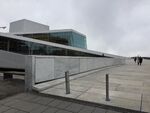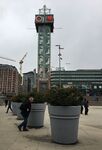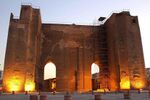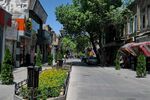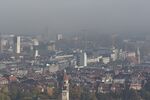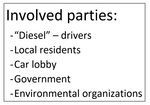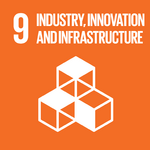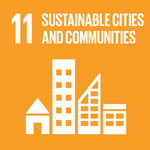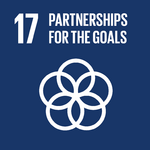LED Online Seminar 2018 - Working Group 4
--> Back to working group overview
Dear working group members. This is your group page and you will be completing the template gradually as we move through the seminar. Good luck and enjoy your collaboration!
Assignment 1 - Reading and Synthesizing Core Terminology
- You can read more details about this assignment here
- Readings are accessible via the resources page
Step 1: Your Landscape Democracy Manifestoes
Step 2: Define your readings
- Please add your readings selection for the terminology exercise before April 18:
A: Landscape and Democracy
IvanOskian - Lynch, Kevin. (1960): The Image of the City, Cambridge, Mass.: MIT Press
Souleima Damak - Olwig, Kenneth R. (1996): "Recovering the Substantive Nature of Landscape" In: Annals of the Association of American Geographers, 86 (4), pp. 630-653. Cambridge/Oxford: Blackwell Publishers.
Souleima Damak - Kucan, Ana (2007). Constructing Landscape Conceptions. In: ECLAS (ed.). JoLA spring 2007, 30-41. Munich: Callwey.
B: Concepts of Participation
Elnaz Imani - Day, Christopher (2002): Consensus Design, Architectural Press
C: Community and Identity
Jonas Löhle - URBACT programme, The European Territorial Cooperation programme aiming to foster sustainable integrated urban development across Europe.
Elnaz Imani - Welk Von Mossner, Alexa (2014): Cinematic Landscapes, In: Topos, No. 88, 2014.
Araceli Quempumil - Gafford, Farrah D. (2013): It Was a Real Village: Community Identity Formation Among Black Middle-Class Residents in Pontchartrain Park, Journal of Urban History.
IvanOskian - Nassauer, Joan Iverson (1995): Culture and Changing Landscape Structure, Landscape Ecology, vol. 10 no. 4
D: Designing
Araceli Quempumil - Smith, Nicola Dawn(2012): Design Charrette: A Vehicle for Consultation or Collaboration
E: Communicating a Vision
Elnaz Imani - Goldstein, B. E., A. T. Wessells, R. Lejano, and W. Butler. 2015. Narrating Resilience: Transforming Urban Systems Through Collaborative Storytelling. Urban Studies. 52 (7): 1285-1303
Steps 3 and 4: Concepts Selection and definition
- Each group member selects three relevant concepts derived from his/her readings and synthesize them/publish them on the wiki by May 9, 2018
- Group members reflect within their groups and define their chosen concepts into a shared definition to be posted on the wiki by June 6, 2018.
- Other group members will be able to comment on the definitions until June 12, 2018
- Each group will also report on their process to come to a set of shared definitions of key landscape democracy concepts on the wiki documentation until June 20, 2018
Concepts and definitions
Author 1: ...
- ......
- .......
- .......
Author 2: IvanO In an urban environment, people orient themselves using mental maps, these mental images gives the public a sense of emotional security and sets the ground for communication; this images compound of: Identity: uniqueness of the urban elements, Structure: the link between urban components and other systems, Meaning: the value of the urban elements to the observer.
Legibility - a term introduced in this book - is the central concept of this publication, characterizes the way people read the cityscape and engages in their way-finding around it.
Lynch’s Five Elements: Paths: routes on which people and goods flow, Edges: make the distinction a part of urban fabric from another, Districts: unmistakable characters, despite the fuzziness of its edges, Nodes: where activities take place, Landmarks: elements that stand out in the urban fabric.
In an urban environment, people orient themselves using mental maps, legibility - a term introduced in this book - is the central concept of this publication, characterizes the way people read the cityscape and engages in their way-finding around it.
Urban planners, according to Lynch, should create a clear mental maps for the planned region to help people in orienting themselves in the built environment, furthermore Lynch emphasizes on the capability of the community in operating and acting upon their environment.
Author 3:Jonas Löhle (URBACT)
- open decision-making and planning culture - citizens and civil society are strongly involved
- transnational exchange between european cities - work together to develop effective and sustainable responses to major urban challenges and societal changes
- implementation of lasting policies - improve the capacity of cities to manage sustainable urban policies and practices in an integrated and participative way
'Author 4: Elnaz Imani'
- (Day, Christopher (2002): Consensus Design, Architectural Press)
Versus democracy, which means the right of the majority to impose its will on the minority, consensus design is about everybody getting what, after working together and listening to the whole situation, they have come to want. This could work at a pre-emotive level, when we agree about the "soul quality" and essence of situation.
- (Welk Von Mossner, Alexa (2014): Cinematic Landscapes, In: Topos, No. 88, 2014)
Landscape always plays an important and active role in the lifelong narrative, even in fiction film.
- (Goldstein, B. E., A. T. Wessells, R. Lejano, and W. Butler. 2015. Narrating Resilience: Transforming Urban Systems Through Collaborative Storytelling. Urban Studies. 52 (7): 1285-1303)
Urban resilience signals a capacity to self-organise at various scales and to adjust behaviour in order to adapt to and transform emergent conditions—including the scale of appropriate action. We can do this across various ways of knowing and existing patterns of action, making them particularly powerful and accessible and telling the communities stories in order to identify system properties that are meaningful and compelling and enhance their personal and collective agency.
Author 5: ...
- ......
- .......
- .......
Step 5: Reflection
Step 6: Revised manifestoes
- please look again at your initial manifestoes and update them with any new aspects/prespectives you have taken up during this seminar
Assignment 2 - Your Landscape Symbols
- You can read more details about this assignment here
Landscape Symbols Author 1: Araceli Quempumil
This is the Opera house in Bjørvika, Oslo. It has become a landmark (as a symbol) and a main attraction for both habitants and tourists in Oslo. The outside of the Opera house symbolizes a new form of a public space, without threes and plants, but geometrical shapes and Italian marble, to illustrate a mountain coming up from the water. The mountains and the nature in Norway is known through: “Allemansretten”. It means that everyone has the right to roam and stay in the outlying areas.
Until the last years, this area was almost empty, consisting only an old and ruined pier from the 1900s. Now it has become one of the most "hip" and developed areas in Oslo, with top modern apartments and buildings. In the next years, it will probably become one of Oslos most popular areas. This picture symbolizes changes and development. Geo-location: Bjørvika-Sørenga, Oslo. LAMBDA (new Munch-museum) and apartment-buildings.
Landscape Symbols Author 2: IvanO
The history of the country is shaped when the red army took over power in 1920, ever since the face of the war devastated country has changed. Yerevan the capital of Armenia was built on Soviet Ideologies, but the paradigms were shifted after the fall of the USSR. Now Armenia is in the phase of trying to find its own identity.
Landscape Symbols Auther 3: Jonas Löhle
Landscape Symbols Author 4: Elnaz Imani
Arg-e-Alishah was a big citadel in downtown, Tabriz which has been destroyed during the time due to earthquakes, wars, seizures and new constructions. Now only a part of the southern wall of this historical landscape has remained which is called as the Symbol of Tabriz. This remnant is the symbol of greatness, power, prosperity, patience, endurance, innocence, dignity and modesty. Because Tabriz has had many ups and downs throughout history, has experienced difficult times and many events and this building has been with Tabriz and the people of Tabriz during all these times and still shines in Tabriz.
Tarbiat Street is one of the old and famous streets in downtown, Tabriz. This pathway was a branch of the Silk Road and has a certain reputation. Tarbiat Street nowadays is a walkway which includes many shopping stores, new malls, accesses to a part of Tabriz old Bazar, Tabriz old neighborhoods and some historical houses. This walkway plays an important role in the perception of space, the feeling of belonging to the environment and the reception of environmental qualities. Tarbiat Street also has a great roll in improvement of collective activity, especially in relation to the city's economy, the quality of the environment and the health of the community. This landscape is a symbol of feeling the passion and mobility in life, discovering the values and attractions in the environment.
El-Golu Mansion is located in the El-Golu garden and lake, which is one of the most important attractions of Tabriz. This historical mansion has special design and position. That is a octangular building in the center of the lake and has openings all its around towards the lake and the garden. The building was previously a royal residence for Qajar courtiers and now is used as a hall for ceremonies. This lake is a beautiful landscape blended with light and color and the mentioned transparent mansion is like a diamond in this bright layer. This landscape is a symbol of purity, clarity, intimacy, generosity, kindness, generality and universality.
Assignment 3 - Role Play on Landscape Democracy "movers and shakers"
- You can read more details about this assignment here
Assignment 4 - Your Landscape Democracy Challenge
- You can read more details about this assignment here
- Each group member will specify a landscape democracy challenge in his/her environment
- Each Landscape Democracy Challenge should be linked to two or three of UN's 17 sustainable development Goals
Landscape Democracy Challenge 1
- Socio-economical differences between youth from the westside and eastside of Oslo
The last years the Norwegian media has focused on the socio-economical differences between youth from the westside and eastside of Oslo. The differences are increasing, and the consequences of this is divisive and damaging for those affected and the rest of the society. I selected this case because it is a challenge in a desperate need of an solution. These sosio-economic driving forces are affecting my everyday landscape in various scales.
The conflict´s core is that Oslo in a way is divided in two. Roughly, the westside concist of many areas where the average person has a higher average pay, compared to a person from the eastside. These areas also do it better on the statistics when it comes to life expectancy, higher education, health, crime among youth and more. Some of the areas in Oslo are homogeneous while others are more diverse: The segregation can be spotted in the everyday life. Also on the many schools in the capital. Your socio-economical status will most probably affect where you grow up and live in Oslo. The price of apartments is high. Some years ago it was much cheaper buying an apartment on the eastside, but now the prices are raising there as well, leading to gentrification, moving those with weak purchasing power further away.
Eventough some areas on the eastside have been through various area lifts to make it better for the different communities, such as "Töyenlöftet", the challenges still are increasing. Together with children poverty, gang violence and drug abuse among teenagers on the eastside of Oslo, the social difficulties are getting worse. These challenges have existed for decades through generations. A good thing is that when it comes to education statistics (SSB) shows that most females are studying regardless on their social backgrounds.
These differences and challenges are so complex that they surpass many of UN´s sustainable Development Goals, and on a long therm they may affect more. Some of the Development Goals the challenges are affecting: 1. No poverty. 2. Zero hunger. 3. Good health and well-being. 4. Quality education. 5. Gender equality. 7. Affordable and clean energy. 8. Decent work and economic growth. 9. Industry, innovation and infrastructure. 10. Reduced inequality 16. Peace, justice and strong institutions. 17.Partnership for the goals.
Your references:
- www.ssb.no
- www.aftenposten.no
Landscape Democracy Challenge 2
- Save Amuslar
what is the issue/conflict The British offshore so called gold developer Lydian International Limited announced its intention to exploit gold in Armenia's largest gold mine Amuslar. Lydian claims to be committed to "high international standards" in prospects of operating and producing, furthermore it affirms its understanding to sustainability and its responsibility towards society.
It is foreseen that approximately 70% of the workers on various construction sites in Armenia will be culled to work in this mine, moreover an accommodation camp is being built to host 500 to roughly 1000 workers, not to mention that hotels and apartments in the town will be used by the company to house 250 non-local workers, whom be working on rotational basis. When mining exploitation is over, miners will abandon Jermuk, leaving it with polluted environment and a distorted reputation as a health resort.Lydian hopes that the project could develop the region and help attract potential investors as well as offering jobs to the unemployed workforce of the country.
The ESIA ( Environmental and Social Impact Assessment) clarifies turning Jermuk from a health resort into a temporary residence for the mine workers. In addition the assessment spelled out and assessed the risks and problems that could occur to Jermuk "such as prostitution, drug consumption, sexually transmitted diseases etc."
Your references: - http://www.lydianinternational.co.uk/ - http://www.ebrd.com/work-with-us/projects/esia/dif-lydian-amulsar-gold-mine-extension.html - http://www.armecofront.net/en/news/amulsar-mine-and-vague-future-of-jermuk-according-to-lydian/
Landscape Democracy Challenge 3
- FINE DUST LOAD IN STUTTGART - A CITY CHOKING
There are too many cars in the city district causing traffic jams, high emissions and noise. The government is thinking about to ban the diesel cars, because they produce the highest emissions of fine dust, but of course there is a huge conflict potential, because it is bad for the car lobby and a lot of people have to rely on their cars.
Your references:
- ...
- ...
Landscape Democracy Challenge 4: Elnaz Imani
- Excessive constructions in Tabriz
With the construction sector experiencing a resurgence in growth, it’s bound to have a detrimental impact on the environment. According to the results, the construction sector uses more than 400 million tons of material a year, many of which has an adverse impact on the environment. Additional research by Construction Products says that the products used during a particular construction job can also have an impact on the surrounding environment, due to the “extraction of raw materials”. Similarly, a number of tools and resources regularly used by contract workers and construction firms, such as chemicals on site and even the Diesel used by diggers and trucks, can significantly “harm public health and the environment,” according to the Environmental Protection Agency (EPA). With this in mind, I choose this case to show the impact in more detail, and investigate the possible solutions.
According to new research by construction blog Bimhow, the construction sector contributes to 23% of air pollution, 50% of the climatic change, 40% of drinking water pollution, and 50% of landfill wastes. Construction activity can “significantly change the surface of a land” due in large part to “clearing of vegetation and excavating” which is common on many construction projects. According to the agency, the result means surrounding environments can be heavily polluted, particularly surrounding water pools, which have experienced an increase in pollution as a result of various construction projects in recent years. Worryingly enough, construction activities consume “half of all the Green Gardens” in Tabriz.
Around half of all non-renewable resources mankind consumes are used in construction, making it one of the least sustainable industries in the world. However, mankind has spent the majority of its existence trying to manipulate the natural environment to better suit its needs so today our daily lives are carried out in and on constructions of one sort or another: we live in houses, we travel on roads, we work and socialise in buildings of all kinds. Contemporary human civilization depends on buildings and what they contain for its continued existence, and yet our planet cannot support the current level of resource consumption associated with them. There is a wide range of environmental issues concerned with the interaction of the land use, planning system and the construction industry. Almost all development undertaken by the construction industry requires planning permission. This is what all the organizations, construction companies and individuals does not care about the landscape of Tabriz, so most of the gardens in Tabriz have been eliminated from the landscape.
Using technology to help landscape in the developing world. In this way Technology is a key in the work we do. Accessing modern methods is an attempt that have been used for facing challenges in the developing world. Wind turbines which are used to help the conditions of the environment, have been accepted as the symbol of Tabriz's mountains.
Development of parks and green spaces are reviewed in many reconstruction plans , however, there is shown little technical knowledge on planning/designing etc. Technical knowledge for effective utilization of landscape is much needed in times of developing parks and green spaces, so that municipality can more effectively treat the lack of the green spots in Tabriz.
Your references:
- https://www.initiafy.com/blog/how-does-construction-impact-the-environment/. accessed at 05.02.2018
- Kumar R, Kaushik SC. Performance evaluation of green roof and shading
for thermal protection of buildings. Build Environ 2005;40(11):1505e11.
- D. Gann, Building Innovation: Complex Constructs in a Changing World
Thomas Telford, London (2000).
- J. Giesekam, et al.,The greenhouse gas emissions and mitigation options for materials used in UK construction Energy Build., 78 (2014), pp. 202-214.
- C. Zhang, L. Canning, Application of non-conventional materials in construction, in: Proceedings of the ICE – Construction Materials, 164(CM4), 2011, pp. 165–172.
Landscape Democracy Challenge 5
- Give a title to your challenge
- Yourname challenge 1.jpg
caption: why did you select this case?
- Yourname challenge 2.jpg
caption: what is the issue/conflict (1)
- Yourname challenge 3.jpg
caption: what is the issue/conflict (2)
- Yourname challenge 4.jpg
caption: who are the actors?
- Yourname challenge 5.jpg
caption: UN's Sustainable Development Goal?
- Yourname challenge 6.jpg
caption: UN's Sustainable Development Goal?
Your references:
- ...
- ...
Assignment 5 - Your Democratic Change Process
- You can read more details about this assignment here
- After documenting and reflecting on your challenges you will continue jointly with one of these challenges and design a democratic change process
Your Democratic Change Process
- Add Title
- Your Democratic Change Process Slide1.jpg
caption: ...
- Your Democratic Change Process Slide2.jpg
caption: ...
- Your Democratic Change Process Slide3.jpg
caption: ...
- Your Democratic Change Process Slide4.jpg
caption: ...
Reflection
- ....
- ....
- ....
Conclusion:
- ....
- ....
- ....
Your references
- ...
- ...
- ...







